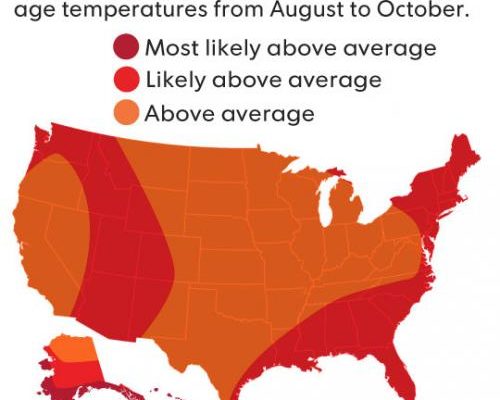It has been a scorching August for the continental US, with the government’s Climate Prediction Center predicting, for the first time on record, that every square inch of all 50 states is forecast to see above-average temperatures for the next three months. The entire forecast map, shown below, awash in the red and orange colors of unusually warm temperatures for a 3-month period is unprecedented, according to Dan Collins, a meteorologist with the prediction center. Typically parts of the map register blue, depicting the likelihood of cooler-than-normal air, or white for equal chances of cool and warm.

However, that is nothing compared to what is taking place in the blistering bond market, where new bond issuance is on pace to blow away all records.
According to Bloomberg calculations, companies raised about $88 billion worldwide in the first week of August, the most for the period in Bloomberg data going back to 1999. The unseasonably brisk pace continued on Monday, with BMW, HSBC Holdings and BNP Paribas selling 2.1 billion pounds ($2.7 billion) of notes, according to data compiled by Bloomberg. The deluge has continued in the US session where Berkshire Hathaway (BRK-A) announced a $2 billion debt offering in four parts. This was followed by Archer-Daniels-Midland announcing a $1 billion 10Y offering, and many more smaller issues.

The catalysts for this debt issuance surge, much of which will be used to fund future stock buybacks, is familiar: the boom in issuance, including a $19.75 billion Microsoft (MSFT) deal, has been fueled by record-low borrowing costs as well as the traditional fallback, namely central banks Europe and Japan buying assets to stimulate growth. Microsoft held its biggest bond sale on Aug. 2 to help finance the acquisition of LinkedIn Corp.
The Bank of England last week cut interest rates and expanded quantitative easing to help support the U.K. economy following the nation’s June 23 vote to the leave the European Union.

